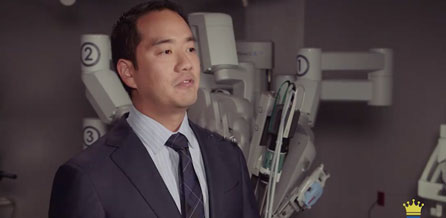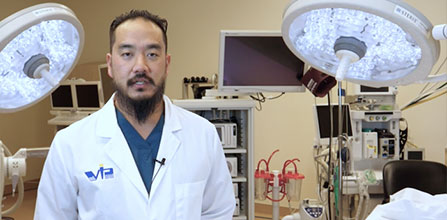Gallbladder Overview, Causes & Symptoms
The gallbladder is a pear-shaped organ located under the liver in the upper right quadrant of the abdomen. The purpose of the gallbladder is to store bile produced by the liver. When one eats, especially a large or high-fat meal, the gallbladder contracts, squeezing bile into the common bile duct and down into the small intestine, which this bile is essential for the digestion of fat. Gallbladder disease can occur for several reasons, but most revolve around gallstones. Gallstones are small, pebble-like formations composed of either primarily cholesterol or bilirubin. While many people have gallstones – it is estimated that up to 20% of us will get them – only about 10% of those people become symptomatic. Symptoms occur when a gallstone blocks the outflow of bile from the gallbladder, causing inflammation.
Causes of Gallbladder Disease
There are several risk factors for gallbladder disease which include:
- Being female
- Being overweight or obese
- Certain diseases including diabetes and cirrhosis of the liver
- Being fertile, taking birth control pills, or hormone replacement therapy
- Poor dietary and lifestyle choices
- Some medications
- Rapid weight loss or fasting
What You Need to Know about Gallstones
Gallstones may be large or small and may vary drastically in number (from a single large gallstone to thousands of sand grain-sized stones). For most, gallstones are asymptomatic meaning they do not cause any pain or discomfort. A small proportion of patients with gallstones will experience severe pain in the abdomen. This pain usually occurs after a meal, especially if it is high in fatty foods. The pain occurs when the gallbladder contracts to release bile and a gallstone blocks the opening to the gallbladder. Gallstones can also become lodged in the common bile duct.
Once you have your first gallstone attack, they usually occur more often and with greater severity. It is at this point that most patients decide to see a surgeon to have their gallbladder removed.
Learn more about common misconceptions about gallstones and gallbladder disease.
Symptoms of Gallbladder Disease
While in most cases patients with gallstones are asymptomatic, it is estimated that up to 10% of patients experience some symptoms, which commonly include:
- Discomfort or sharp pain in the upper right-hand quadrant of the abdomen, just under the rib cage
- Jaundice – yellowing of the skin or eyes due to the backup of bile in the liver
- Pancreatitis – inflammation of the pancreas
- Nausea and vomiting
The symptoms of gallbladder disease may be exacerbated by eating high-fat or large meals, and oftentimes, patients will feel significant pain in the upper abdomen shortly after eating. Nausea and vomiting may accompany the pain. While the pain does eventually go away, the patient will usually experience gallstone attacks in greater quantity and severity until they seek treatment.
Diagnosis of Gallbladder Disease
Gallbladder symptoms almost always present in the form of pain in the upper, right quadrant of the abdomen, and therefore, an experienced physician can make the preliminary diagnosis with a simple medical history. However, gallbladder disease will be confirmed using ultrasound technology to visualize the size and shape of the gallbladder and the stones therein.
Treatment Options for Gallstones
Since the gallbladder is not essential to our bodily functions, a gallbladder removal procedure known as a cholecystectomy is most commonly performed. This is a minimally invasive procedure performed regularly by a general surgeon with few risks and recovery considerations. Learn more about gallbladder removal or cholecystectomy.
Certain gallstones that become lodged in the common bile duct may require aspiration, as this blockage can lead to severe consequences and cannot be resolved through surgery alone.
Smaller cholesterol stones may be dissolved (or prevented) with a natural bile extract known as ursodiol. This process takes several months and may not be fully effective. Ursodiol does not dissolve bilirubin stones.
To schedule a consultation with Dr. Tsuda or Dr. Ryan, and to learn more about the options available for treating gallbladder disease, please contact us.



